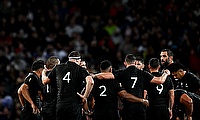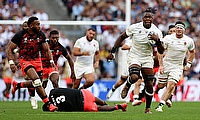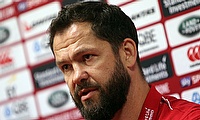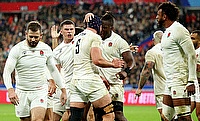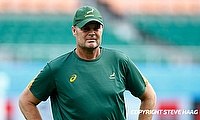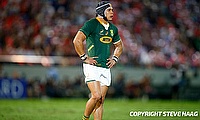Battle of the back rows
Rugby World Cup finals are close affairs. Never one by more than a few points and always go down to wire. Every battle across the pitch is key, but this weekend the battle of the back row will be where the match is won and lost.
Both the All Blacks and the Wallabies boast power upfront and buckets of flair out the back, but without their back rows on form, neither side will be able to get into the game.
This match up pitches two opposing back row philosophies against each other. For the All Blacks, it is the archetypal back row, the classic, the old favourite. A tried and tested combination beautifully balancing pinching, passing and power. In Jerome Kaino, Richie McCaw and Kieran Reid the All Blacks have without doubt the most balanced back row and one that plays by the rules in terms of what a back row should be. For the Wallabies, it is a different approach. Opting for two sevens and a six their focus s on attacking the breakdown and attempting to deny the opposition any clean ball.
Jerome Kaino is the perfect classic blindside. A workhorse, getting through countless tackles, clear outs and other less glamorous work that allows McCaw and Reid to take the headlines. As well as doing the hard years, Kaino can often be found floating on the wings, looking for matchups to cause havoc in attack, as we saw when the Blues back row dived over at the corner in the semi final.
It is impossible to think open side without thinking of the All Blacks captain. No player has reined supreme as master of the dark arts for as long as McCaw. King of the crafty, McCaw knows every trick in the book. What sets him apart is his reading of the game. He may not be the fastest, but McCaw just knows where to be. For years he has been seen as the best turnover and jackal merchant in World Rugby, but his opponents on Saturday may well be taking his throne in that department. Never the less, McCaw’s ability to play the ref and seemingly take to the field in an invisibility cloak at times sets the standard for sevens world wide.
And finally, Kieran Reid. The archetypal modern number eight who mixes power and grunt with soft hands and a creativity that could see him slot into most sides midfield. Reid is what people expect from an eight, less time in rucks but more time being a crucial link between the forwards and backs, keeping the team going forward and being a stonewall in defence.
This is what back rows have looked like for years, equally focused on defence and attack and balancing all the needs of the team.
The Wallabies, however, have shown us all a new way to play the back row. Whereas the rest of Southern Hemisphere rugby is attack focused, the Australian back row is one of the most effective defensive outfits in World Rugby. Moving away from the conventional six seven eight, Michael Cheika has gone for a six, seven, seven combination of Scott Fardy, Michael Hooper and one of the players of the tournament, David Pocock. Where this back row may lack in go forward grunt at times, they have brutally exposed other side’s weakness at the breakdown.
The unsung hero of this back row is Fardy. Very similar to Kaino, the Brumbies back rower gets through a monstrous amount of work. The hard tackling, big carrying Fardy does the dirty work that gives Pocock and Hooper the platform to give opposition back rows nightmares for weeks to come.
Wallaby vice captain Hooper has somewhat been overshadowed by his partner in crime Pockock, but these two work as a dangerous duo capable of killing opposition attacks at source.
If its not one, it’s the other. Shifting the balance of the back row to two out and out sevens has been Cheika’s masterstroke and has been the platform on which they have reached the final.
Australia’s demolition of England was the textbook display from Hooper and Pockock. England could not gain any momentum or go forward and as the game went on were forced to avoid contact as every time one of the Wallaby sevens would be there, slowing it down or stealing it.
Not the biggest of men, their low centre of gravity makes them almost impossible to shift when over the ball and they squeezed the life out of England and starved their backline of possession.
The talisman of the Wallaby’s route to the final has to be Pocock. 14 turnovers to his name in four games throughout the competition speaks volumes, with the next closer player having made a poxy nine in comparison.
Pockock has shown how Cheika’s new approach to the breakdown can work, a move away from the textbook trio to a focus on attacking the breaking down and not allowing the opposition any clean ball.
This weekend sees these two differing approaches to the back row go toe to toe and, depending on how the result goes, we could see a fundamental shift in the makeup of back rows in the future.
Should the Wallaby approach prevail, we could see the beginning of the end for the classic six, seven, eight as the new rules at the breakdown favour the Pocock/Hooper approach.
One thing is certain, it will be the fine margins that decide Saturday’s game, and which ever back row can win this battle will be the ones that lift the Webb Eillis trophy.

